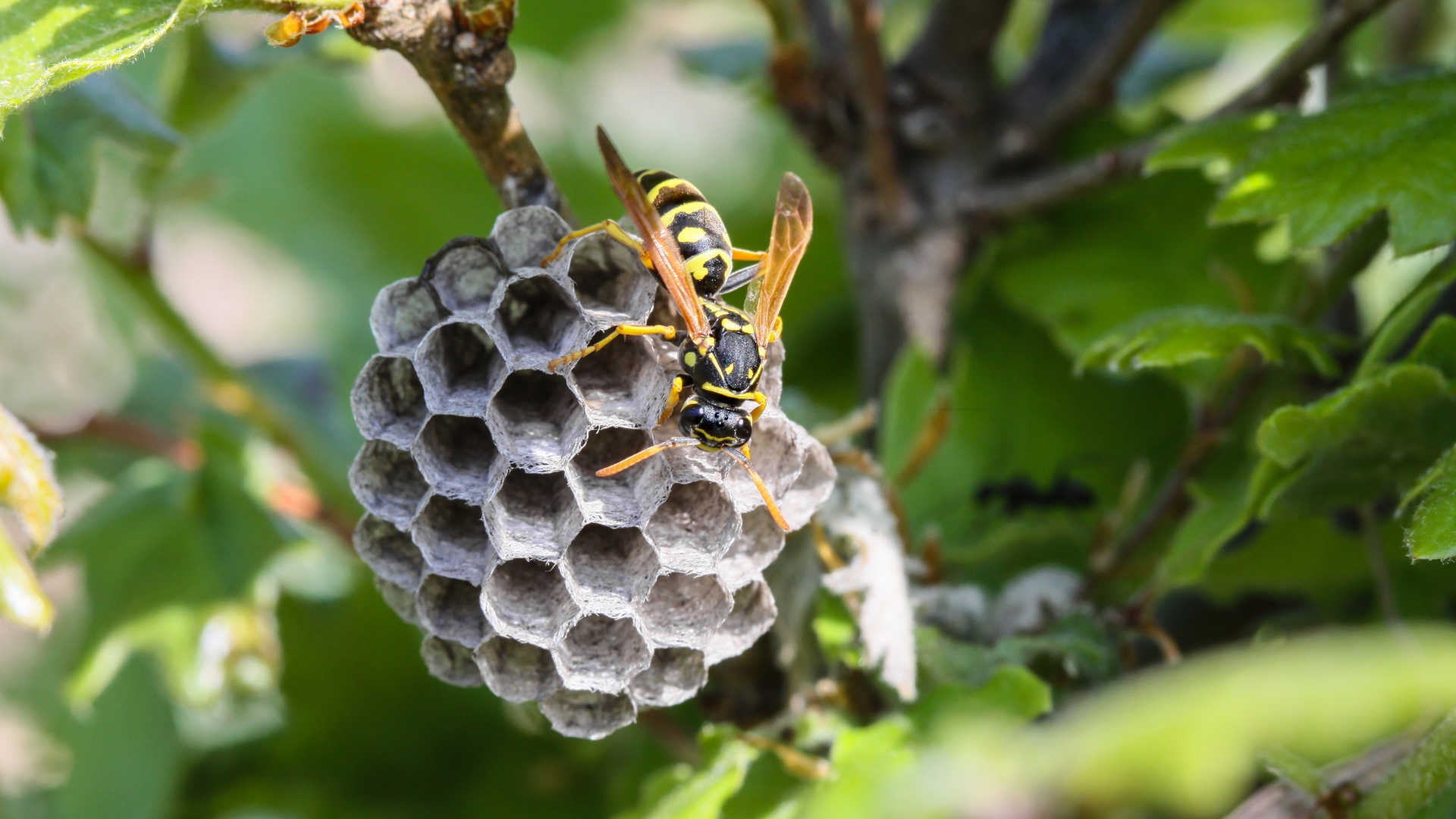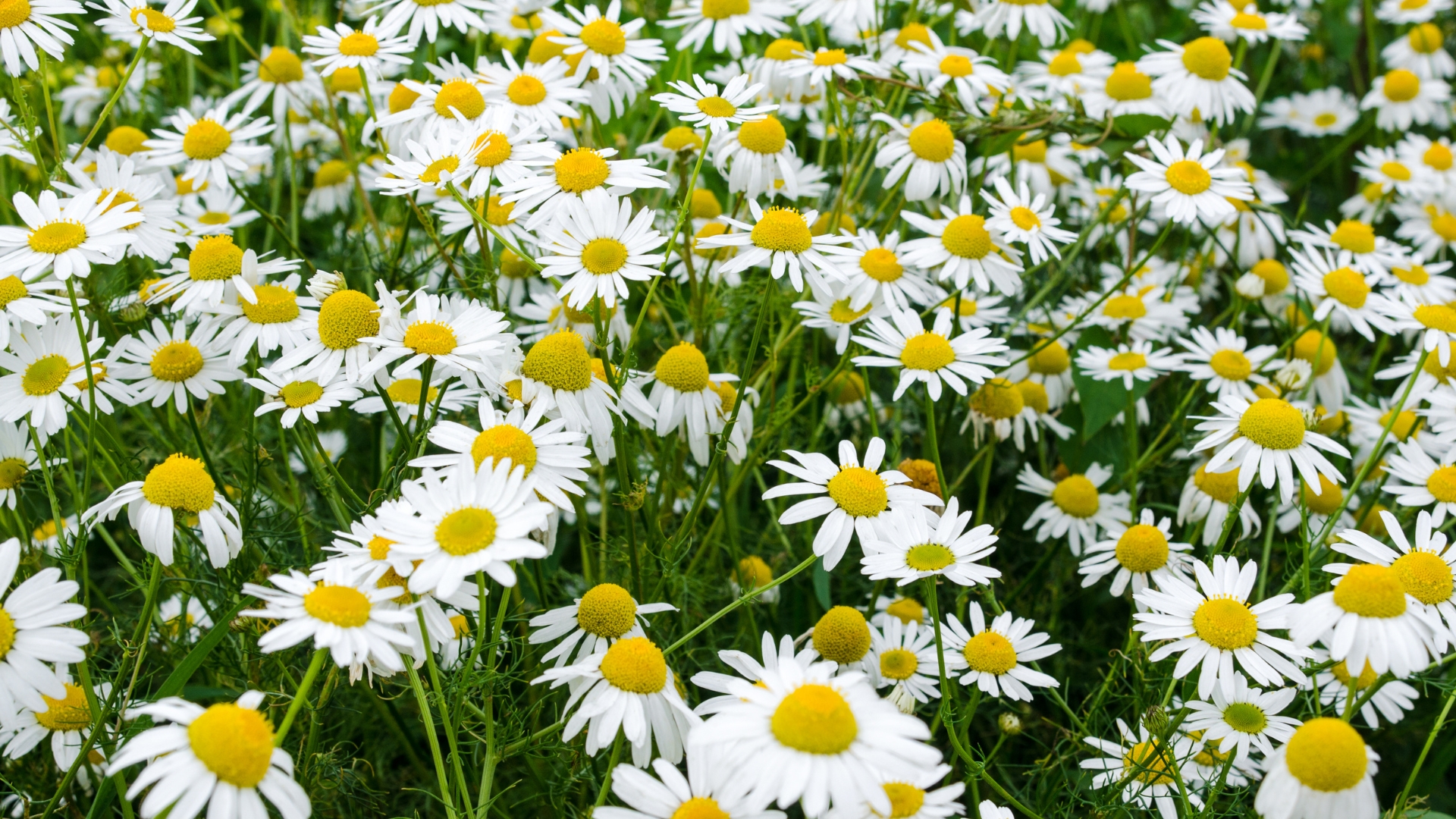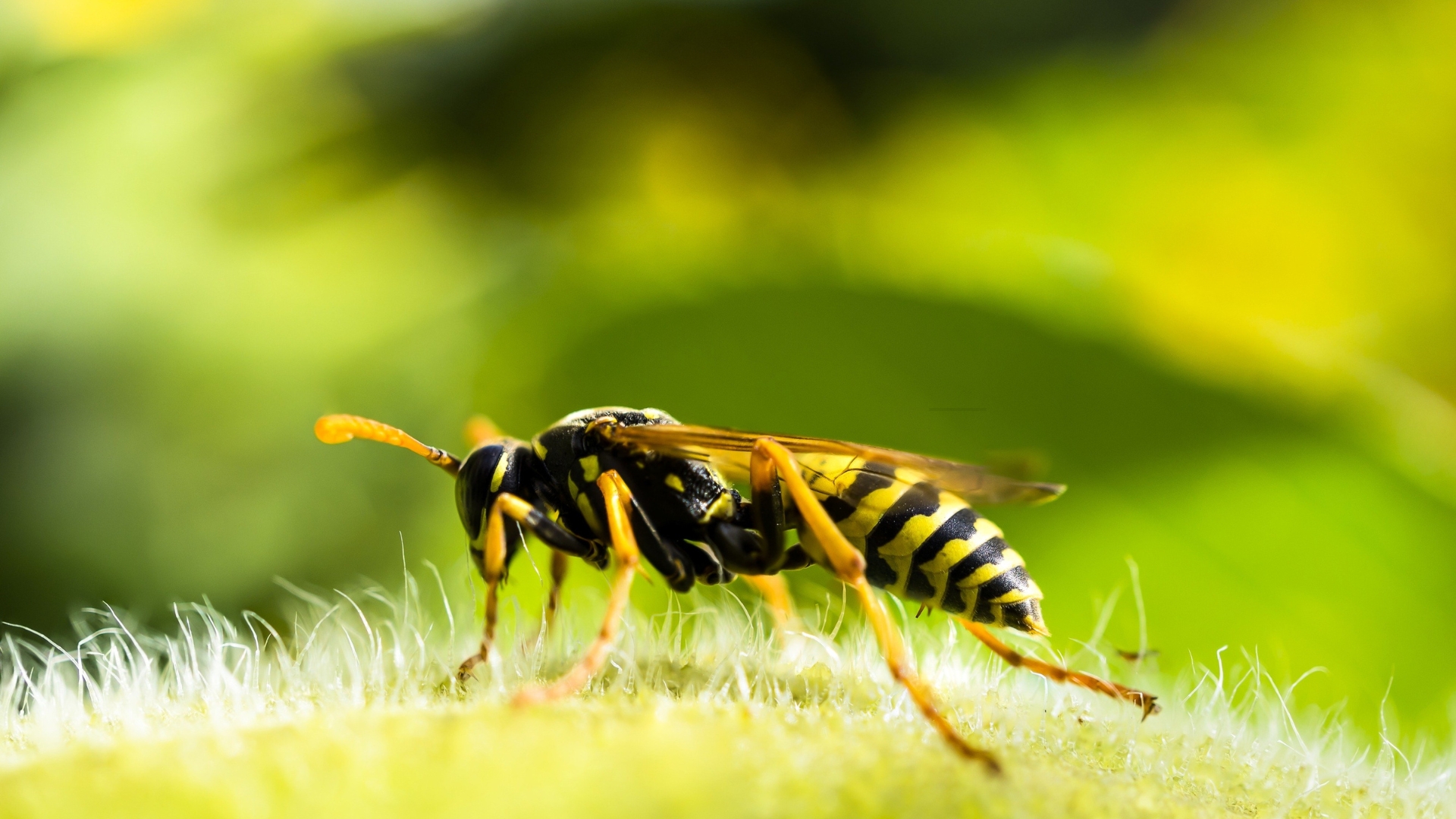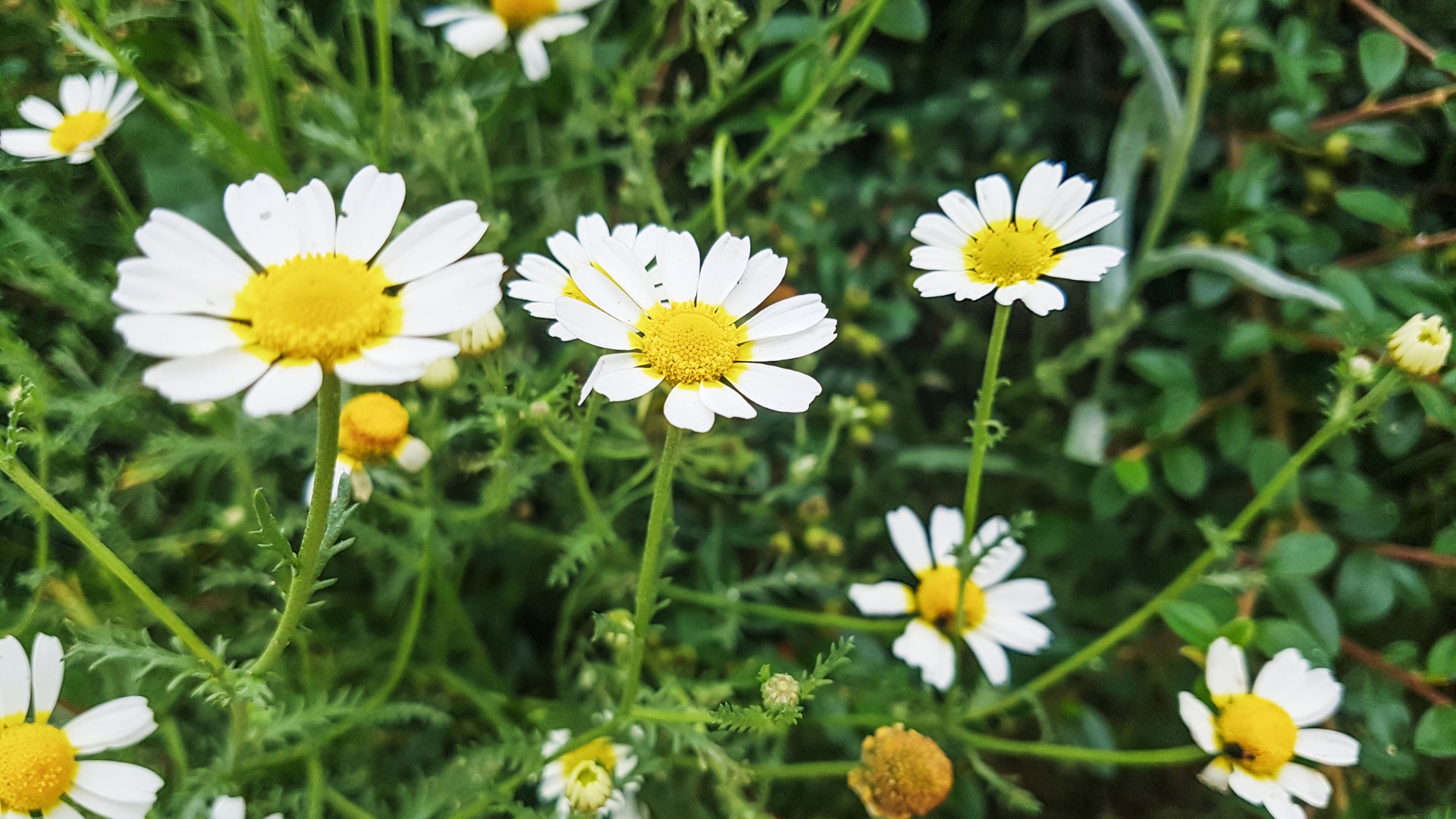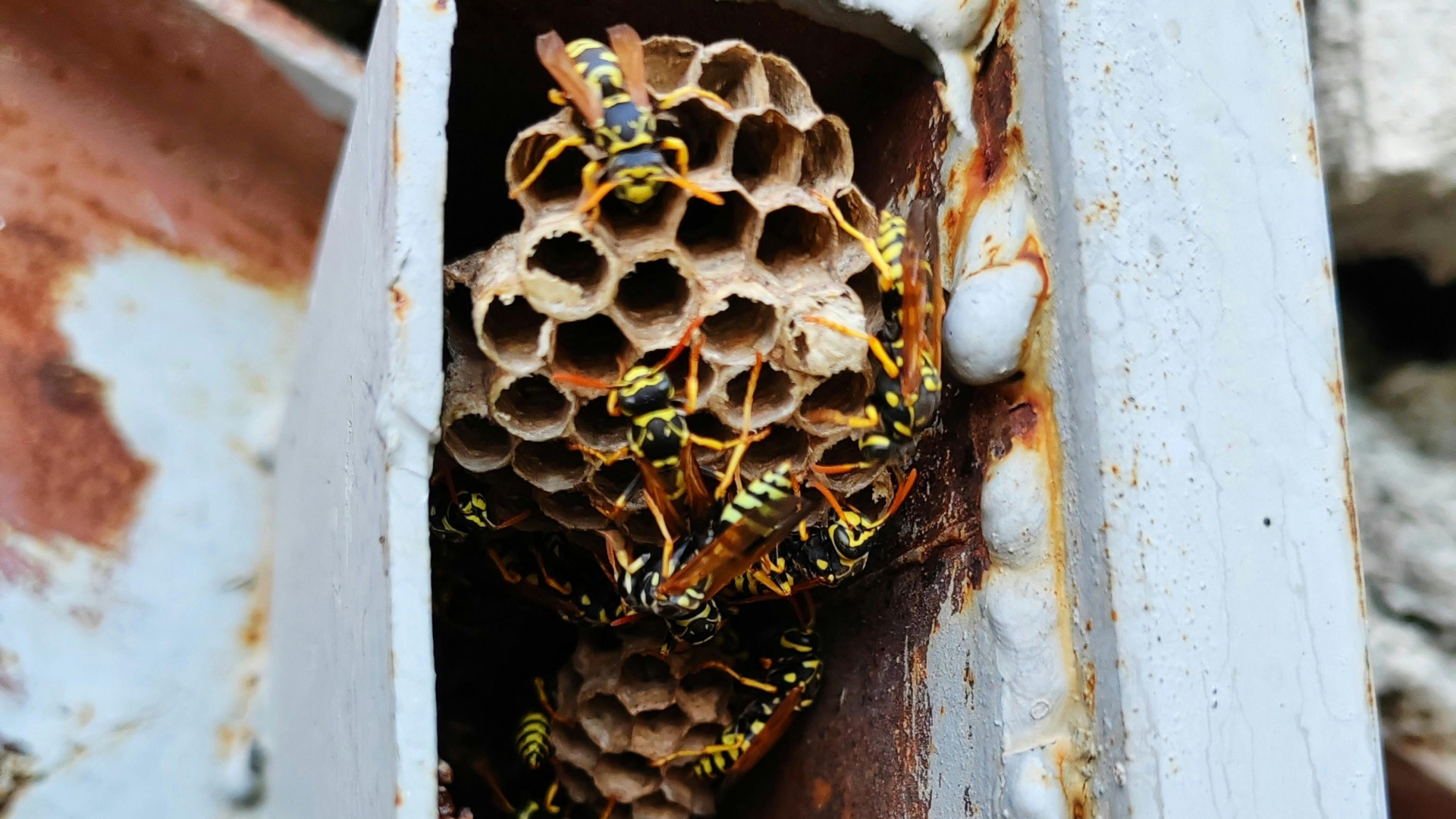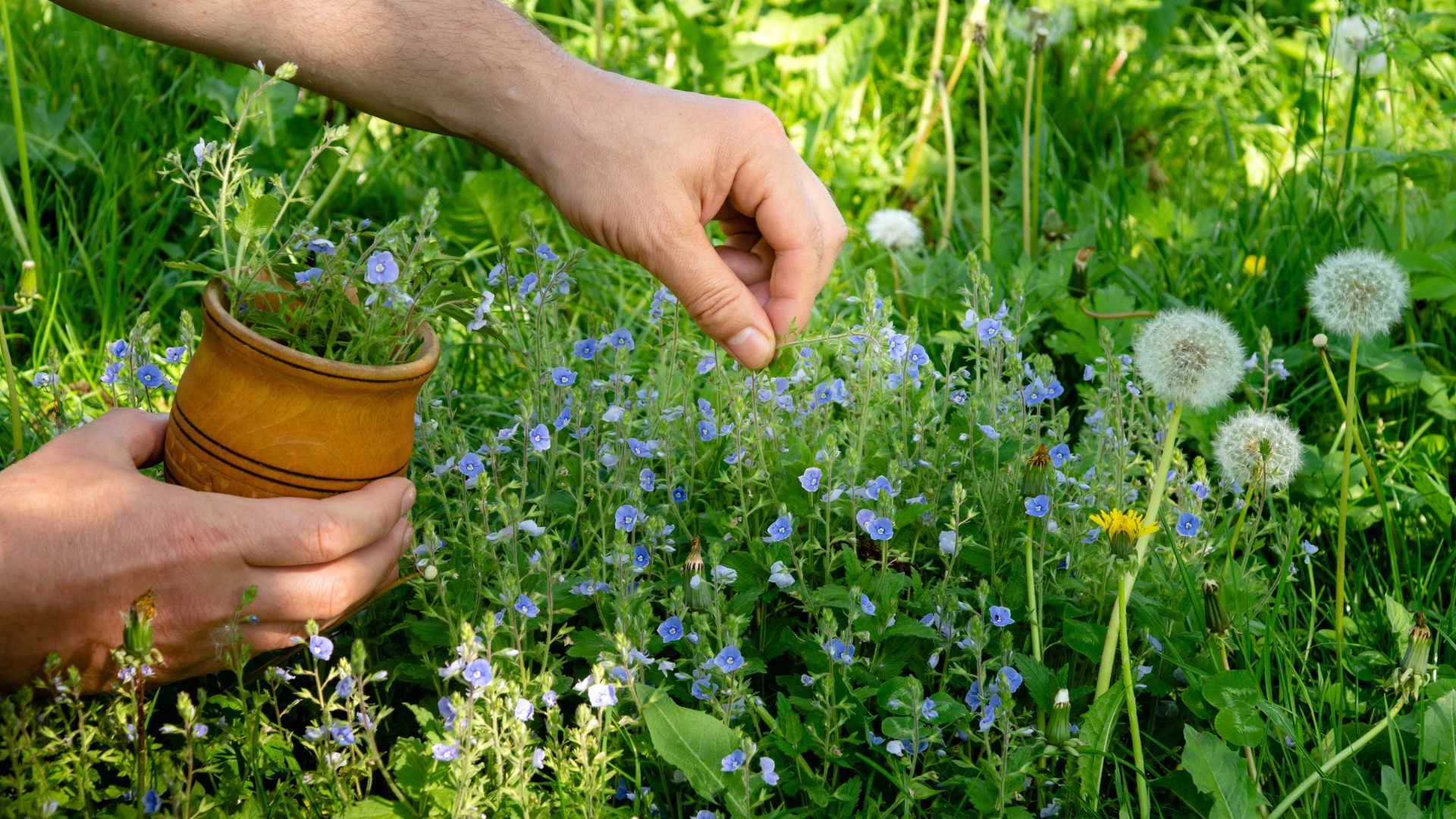Wasps had turned my backyard into their personal headquarters. I couldn’t water my plants without dodging their angry flights, and outdoor meals? Forget it.
They buzzed around like they owned the place, making every moment outside feel like a battle.
I was on the verge of surrendering when I stumbled upon a single plant that sent them packing.
No chemicals, no swatting, no stress—just a sweet-smelling flower that worked like magic. I can finally enjoy my garden in peace, and I’ll never go back to fighting wasps the hard way again.
Roman Chamomile Is Your Best Ally!
If you’ve ever wandered through a meadow in Europe or Western Asia, you might have unknowingly brushed past Roman chamomile (Chamaemelum nobile).
This low-growing, perennial herb forms a soft, dense carpet of feathery green foliage that releases a fresh, apple-like scent when touched.
Dotted across its greenery are small, daisy-like flowers, each with a bright yellow center and delicate white petals. Typically reaching 4 to 12 inches in height, this plant spreads effortlessly, making it a beautiful ground cover or border plant in cottage-style gardens and herb beds.
Unlike its taller cousin, German chamomile, Roman chamomile is a creeping perennial that thrives in well-draining soils and enjoys full sun to partial shade.
It has been cultivated for centuries, not just for its beauty but for its hardy nature and ability to tolerate dry, sandy conditions.
Whether planted along pathways, in garden beds, or even between stepping stones, this resilient plant weaves a lush, fragrant tapestry that softens the landscape while requiring minimal maintenance.
But beyond its visual charm, Roman chamomile has a secret power that makes it an absolute must-have in your garden.
Why Wasps Stay Away From It
Wasps may be persistent, but they have their weaknesses—and Roman chamomile is one of them. While its fresh, herbal scent is pleasant to humans, wasps can’t stand it.
The plant emits natural compounds that interfere with their ability to detect food, essentially masking the sweet scents that usually attract them.
To a wasp, a garden filled with Roman chamomile feels unwelcoming, encouraging them to look elsewhere for more inviting spaces.
But the effect goes beyond simple avoidance. Roman chamomile also contains essential oils that act as a mild repellent, creating an invisible barrier that keeps wasps from lingering.
Unlike harsh chemical sprays or traps, this method works gently and naturally, ensuring your outdoor space remains enjoyable without harming beneficial insects.
If you’re tired of swatting away uninvited guests every time you step outside, adding this plant to your garden is a game-changer.
How To Grow Roman Chamomile In Your Garden
Roman chamomile isn’t just effective—it’s also incredibly easy to grow. It thrives in well-drained soil with a neutral to slightly acidic pH and enjoys full sun to partial shade.
If you’re planting it in a warm climate, a bit of afternoon shade will help prevent scorching, but otherwise, this plant loves the sunlight. It works beautifully as a low-growing ground cover, a fragrant addition to herb gardens, or even in container plantings.
To get started, space plants 6 to 12 inches apart to allow them room to spread. If growing from seed, lightly press them into the soil without covering them, as they need sunlight to germinate.
Keep the soil evenly moist until young plants establish, then ease up on watering, as Roman chamomile is fairly drought-tolerant. Over time, it will fill in the gaps, creating a soft, cushiony mat of green with delicate flowers that bloom from late spring to early fall.
Why Keep Wasps Away
While wasps play an important role in nature, that doesn’t mean you want them hovering around your patio, garden, or picnic table.
Unlike bees, which are mostly non-aggressive, wasps can be territorial and unpredictable, especially in late summer when their colonies are at their peak. A sting from a wasp isn’t just painful—it can trigger allergic reactions in some people, making their presence a real concern.
Beyond the health risks, wasps can wreak havoc on outdoor spaces. They’re notorious for raiding fruit trees, invading outdoor meals, and even chewing on wooden structures to build their nests.
Keeping them at bay means fewer interruptions to your time outdoors and a safer, more enjoyable garden.
With Roman chamomile, you can create an environment that naturally discourages wasps without resorting to harmful chemicals.
Combine Various Methods For The Best Results
While Roman chamomile is an excellent natural deterrent, using it alongside other wasp-repelling strategies will maximize your results.
Companion planting with other wasp-repelling plants, like mint, basil, and lavender, strengthens your garden’s natural defenses. These plants work together to create a multi-layered scent barrier that keeps wasps from getting too comfortable.
Additionally, removing attractants like open garbage bins, sugary drinks, and exposed compost will reduce the chances of wasps returning to your space.
Hanging decoy nests can also discourage new colonies from forming nearby. By combining Roman chamomile with these simple, natural methods, you can create a garden that’s not only beautiful and fragrant but also blissfully wasp-free.

